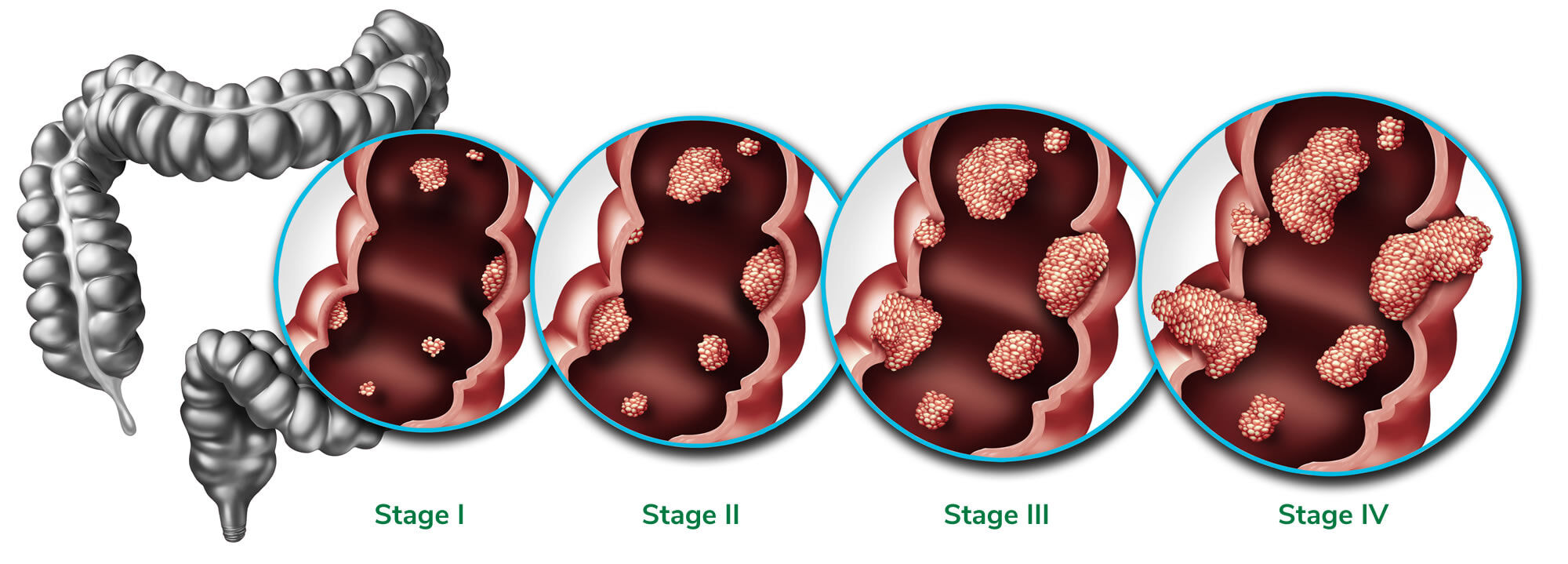- https://www.cancer.net/cancer-types/colorectal-cancer/risk-factors-and-prevention#:~:text=About%2011%25%20of%20all%20colorectal,cancer%20in%20the%20United%20States
- Adler A, Geiger S, Keil A, Bias H, Schatz P, deVos T, et al. Improving compliance to colorectal cancer screening using blood and stool based tests in patients refusing screening colonoscopy in Germany. BMC Gastroenterol. 2014 Oct 17;14:183
- Australia colorectal cancer statistics. Available at: https://ncci.canceraustralia.gov.au/diagnosis/distribution-cancer-stage/distribution-cancer-stage
- UK colorectal cancer statistics. Available at: https://www.cancerresearchuk.org/health-professional/cancer-statistics/statistics-by-cancer-type/bowel-cancer/survival#heading-Three
- US colorectal cancer statistics. Available at : https://www.cancer.org/cancer/colon-rectal-cancer/detection-diagnosis-staging/survival-rates.html
- https://www.canceraustralia.gov.au/cancer-types/bowel-cancer/awareness
- National Cancer Control Indicators – https://ncci.canceraustralia.gov.au/screening/colorectal-screening-rates/colorectal-screening-rate-participation
- Liles EG, Coronado GD, Perrin N, Harte AH, Nungesser R, Quigley N, Potter NT, Weiss G, Koenig T, deVos T. screening blood test is higher than of a fecal test offered in clinic: A randomized trial. Cancer Treatment and Research Communications. 2017 10: 27-31
- Data on file, October 2021

It is well established that the 5-year survival rate for CRC, is greater than 90% when detected early2

Missed detection of early-stage CRC results in poor survival rates3-5
91%
72%
13%
Risk factors associated with CRC
A risk factor is any factor that may increase a person’s possibility of developing cancer. Some risk factors are referred to as modifiable, such as lifestyle or environmental risk factors. Others are called non-modifiable, such as inherited factors or whether someone in the family has had cancer.6
The cause of colorectal cancer is not known. Evaluating your risk factors and discussing them with the doctor may help you make more informed lifestyle and health care choices.6
Modifiable Risk Factors6

A diet low in fibre

High red meat consumption, especially processed meats

Physical inactivity and obesity

Consumption of alcohol and tobacco

Low blood level of vitamin D
Non-Modifiable Risk Factors6

Personal history of certain types of cancers (ovarian/uterine)

IBD, such as Crohn’s and Ulcerative Colitis

Family history of CRC

Type 2 Diabetes

Aged ≥ 50

A previous diagnosis of polyps/CRC
Participation in CRC screening remains suboptimal despite national programs being in place in many countries worldwide.
In Australia, over 50% of eligible individuals remain unscreened for CRC, and this has not changed since the national program was introduced in 2006.7
Observational studies have shown that 78-93% of people offered CRC screening, preferred blood-based tests over faecal tests, with ease and convenience being the main reason for their preference.2,8
Reasons for preferring blood-based options:2,8
- Convenience of a blood draw
- Ease / comfort of a blood test
- Lower time requirement vs faecal test
Rhythm Biosciences has developed ColoSTAT®*, a simple, affordable blood-based test for the detection of CRC, is currently being updated to meet relevant regulatory standards.
*currently in development




SIMPLE – A blood test that is an easy addition to the standard panel of doctor requests. It is designed for easy adaptation by laboratories performing Multiplex ELISA assays routinely.
ACCURATE – obtains a qualitative likelihood of CRC presence based on 5 protein biomarker levels in the blood.
PATIENT-FRIENDLY – convenient and can be part of routine health control.
ColoSTAT® has the potential to:
- Provide an alternative for those unwilling or unable to participate in current screening programs
- Increase participation rate in CRC testing
- Improve early diagnosis of CRC
- Improve survival rates
- Reduce mortality rate
- Reduce healthcare costs associated with CRC treatment
ColoSTAT® immunoassay test does not diagnose colorectal cancer but is a tool for determining when colonoscopy or another type of diagnostic follow-up is recommended.
RHY-001 study,9 evaluated ColoSTAT®'s clinical performance, versus the gold standard, Colonoscopy, and showed an estimated sensitivity of 81.3% and of 91% (overall CRC)
Sensitivity9
81.3%
Specificity9
91%
References
About us:
Contact
Rhythm Biosciences
Bio21 Institute
30 Flemington Road
Parkville VIC 3010
Australia
